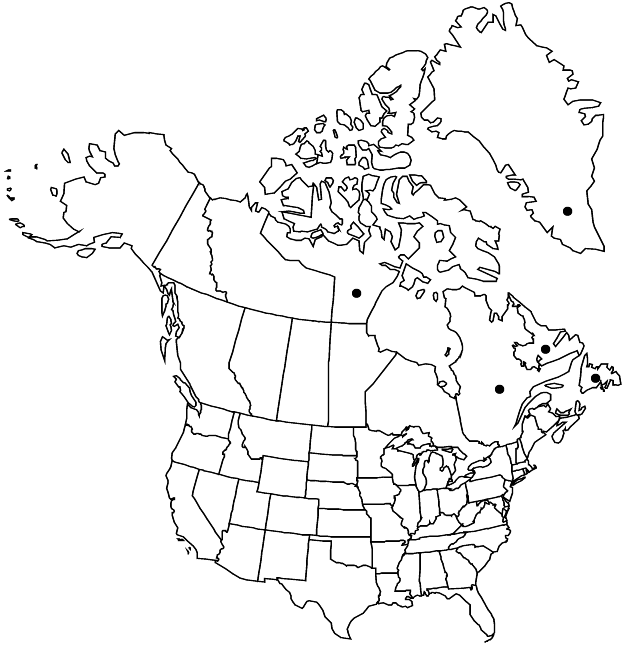Silene suecica
Willdenowia 12: 190. 1982.
Plants perennial, cespitose, glabrous to sparsely pubescent, nonviscid; taproot stout. Stems erect, simple, 5–35 cm, glabrous or very sparsely short-pubescent. Leaves: basal crowded, blade narrowly oblanceolate, 1–5 cm × 1–5 mm, tapered into broad ciliate base, apex acute; cauline in 2–5 pairs, sessile, connate proximally, blade narrowly lanceolate, 1–4 cm × 2–7 mm, margins ciliate, apex acute. Inflorescences cymose, congested, 6–30-flowered, bracteate, pedunculate, often with smaller pedunculate branches in distal nodes; bracts purple, lanceolate, 2–20 mm; peduncle glabrous to sparsely puberulent. Pedicels glabrous to sparsely puberulent. Flowers sessile or short-petiolate, 5–10 mm diam.; calyx purple, faintly 10-veined, campanulate, 4–6 × 3–5 mm, base attenuate into pedicel, lobes ovate, 1–1.5 mm, margins broad, membranous, apex obtuse; corolla bright pink (rarely white), limb spreading, 2-lobed to middle, 3.5–7 mm, cuneate into claw, ca. 11/4–11/2 times calyx, appendages absent; stamens ca. equaling petals; stigmas 5, ca. equaling petals. Capsules ovoid, equaling to slightly longer than calyx, opening by 5 recurved teeth; carpophore ca. 1 mm. Seeds dark brown, reniform, 0.5–0.8 mm, verrucate with crescent-shaped pattern. 2n = 24.
Phenology: Flowering summer.
Habitat: Tundra, rocky barrens, gulleys and river outwashes, grassy slopes, sea cliffs
Elevation: 0-1100 m
Distribution

Greenland, Nfld. and Labr., Nunavut, Que., Europe (Iceland).
Discussion
North American material of this arctic-alpine species has been regarded as distinct at the varietal and subspecific levels (M. L. Fernald 1940b; T. W. Böcher 1963) because it tends to be larger. However, the distinction is arbitrary, and some European material is as large as that from North America. A recent electrophoretic study (K. B. Haraldsen and J. Wesenberg 1993) of allozymes in populations from both continents provides no support for subdivision of this species.
Selected References
None.